The biggest animals in the world are a wonder to behold. With the sheer size of some animals forcing us to pause and take in their glory, it’s hard not to be impressed by some of the biggest animals in the world.
Let’s dive in!
Key Facts:
- The blue whale is the biggest animal in the world.
- Some of the other biggest animals in the world include African elephants, hippopotamus, and giraffes.
15 Biggest Animals in the World
Ready to explore some of the biggest animals in the world? You are in the right place!
Of course, we won’t cover every single large animal. But some of the largest animals in the world have earned a place on this list.
1. Blue Whale

Blue whales, known as the gentle giants of the ocean, are the largest animals to have ever lived on Earth. With their striking blue-gray color and sleek bodies, these magnificent creatures can reach lengths of up to 100 feet (30 meters) and weigh a staggering 200 tons. To put their immense size into perspective, a single blue whale is longer than the length of a basketball court and heavier than 33 elephants combined.
Blue whales are primarily found in the open ocean, particularly in cold and nutrient-rich waters. They have a wide-ranging habitat preference, often migrating thousands of miles each year in search of food and breeding grounds. Despite their enormous size, blue whales are filter feeders, consuming massive amounts of tiny shrimp-like organisms called krill. They use baleen plates in their mouths to filter out water while trapping and consuming the krill.
Unfortunately, blue whales are currently classified as endangered on the International Union for Conservation of Nature (IUCN) Red List. They have faced severe threats from historical commercial whaling, which significantly depleted their populations. Today, conservation efforts aim to protect these magnificent creatures through measures such as enforcing whaling bans, establishing marine protected areas, and conducting research to better understand and preserve their habitats.
2. African Elephant
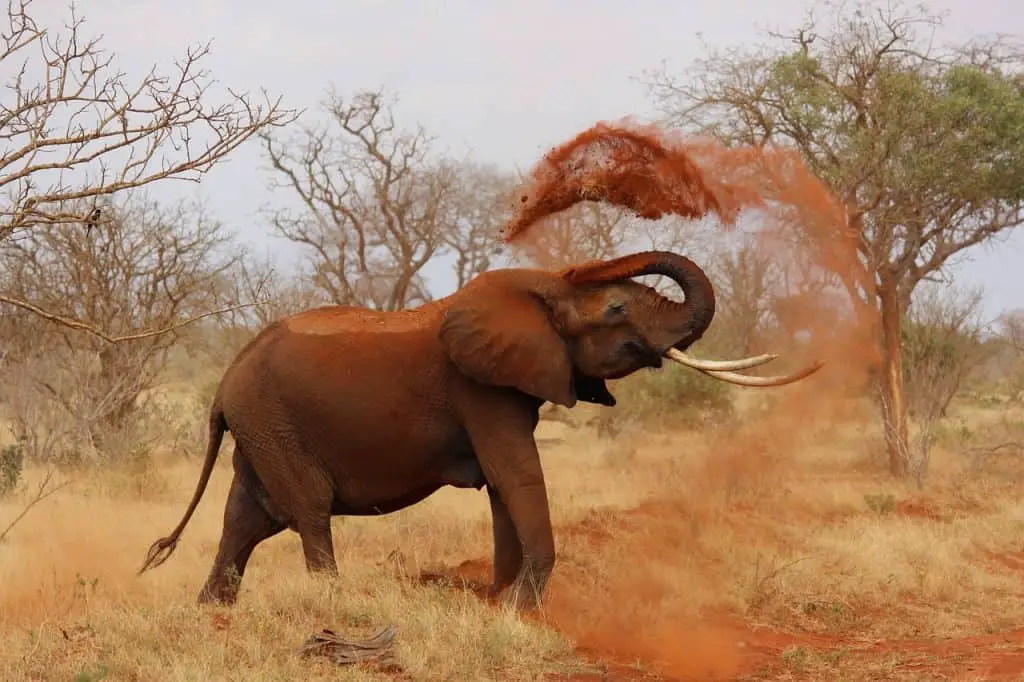
African elephants, the largest land animals on Earth, possess an awe-inspiring presence with their massive bodies and iconic tusks. These magnificent creatures can stand up to 13 feet (4 meters) tall at the shoulder and weigh as much as 12,000 pounds (5,400 kilograms). To give you an idea of their size, an adult African elephant is larger than a small car and their ears alone can be as large as a person.
African elephants inhabit a range of diverse habitats across the continent, including savannas, forests, and grasslands. They are highly adaptable, but they prefer areas with access to water sources for drinking and bathing. These intelligent creatures are herbivores, consuming a vast amount of vegetation each day to sustain their massive bodies.
3. Saltwater Crocodile
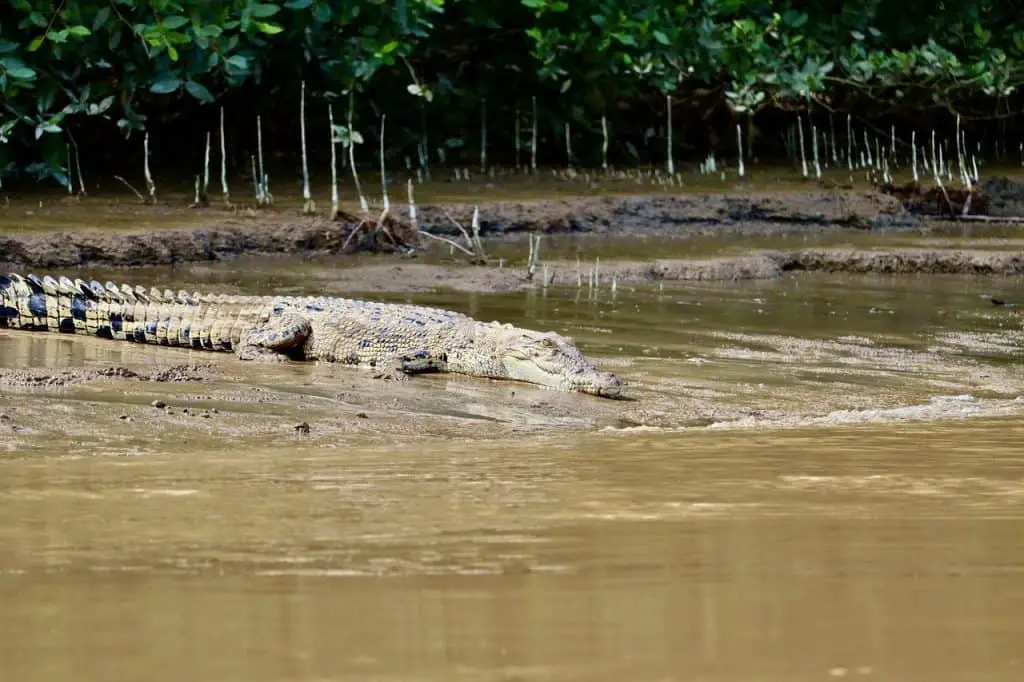
Saltwater crocodiles are the largest living reptiles on Earth and exhibit a formidable presence in their physical appearance. These apex predators can reach lengths of up to 20 feet (6 meters) or more, with the largest recorded individuals exceeding 23 feet (7 meters) in length. To put their size into perspective, a fully grown saltwater crocodile can be as long as a small truck and weigh over a ton.
These impressive reptiles are well adapted to both saltwater and freshwater habitats, hence their name. They inhabit estuaries, rivers, and coastal regions across the tropical regions of Southeast Asia, Australia, and parts of the Indian subcontinent. With their incredible ability to regulate salt levels in their bodies, saltwater crocodiles can venture far out into the open ocean.
4. Ostrich
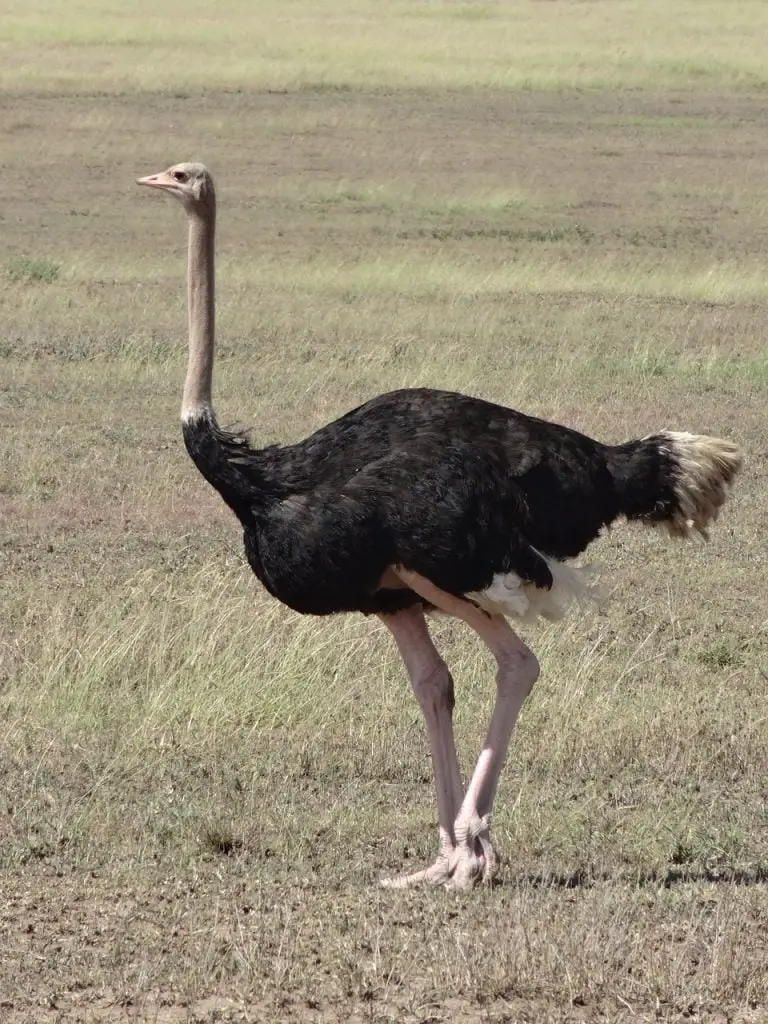
The ostrich, the largest living bird on our planet, stands out on this list of biggest animals in the world. These remarkable creatures can reach heights of up to 9 feet (2.7 meters) and weigh up to 320 pounds (145 kilograms). In comparison, an adult ostrich can be taller than an average human and weigh as much as two adult male lions combined.
Ostriches are native to the open grasslands and savannas of Africa, where they thrive in semi-arid and arid habitats. They are well adapted to their environment, with long, powerful legs that allow them to sprint at speeds of up to 40 miles per hour (64 kilometers per hour). Additionally, ostriches have large wings used for balance and courtship displays, but they are unable to fly.
5. Leatherback Sea Turtle

The leatherback sea turtle, an extraordinary marine creature, is the largest of all living turtles. With a distinctive appearance, these majestic turtles can grow up to 6 feet (2 meters) in length and weigh over 1,000 pounds (450 kilograms). To give you an idea of their size, an adult leatherback sea turtle can be as long as a compact car and outweigh several adult humans combined.
Unlike other sea turtles, the leatherback has a unique shell structure made of a leathery, flexible material instead of a hard shell. This adaptation enables them to navigate the depths of the ocean with ease. Leatherback sea turtles have a wide distribution, inhabiting both tropical and temperate waters. They undertake incredible migratory journeys, traveling thousands of miles across the oceans to find suitable nesting sites.
6. Giant Weta

The giant weta, an intriguing insect species, is recognized as one of the largest and heaviest insects in the world. With a robust and intimidating appearance, these remarkable creatures can grow up to 4 inches (10 centimeters) in length and weigh over 2 ounces (60 grams). To put their size into perspective, an adult giant weta can be as long as a human hand and heavier than a small mouse.
Giant wetas are primarily found in New Zealand, where they inhabit various natural environments such as forests, grasslands, and shrublands. They are well adapted to their surroundings, with powerful legs and strong mandibles that enable them to climb, burrow, and feed on vegetation. Despite their size, giant wetas are herbivorous, feeding on plants, leaves, and fruits.
7. Goliath Birdeater Spider

The Goliath birdeater spider, a formidable arachnid, holds the title for being the largest spider in the world. With a leg span of up to 12 inches (30 centimeters) and a body length of around 5 inches (13 centimeters), these spiders are an imposing sight. To provide a visual comparison, the leg span of a Goliath birdeater can be as wide as a dinner plate, and their body size is akin to that of a mouse.
Native to the rainforests of South America, Goliath birdeaters inhabit various habitats, including marshlands, swamps, and deep burrows. They are primarily ground-dwelling spiders but are also capable climbers. Despite their name, Goliath birdeaters predominantly feed on insects, small vertebrates, and invertebrates, although they occasionally capture birds as well.
8. Whale Shark
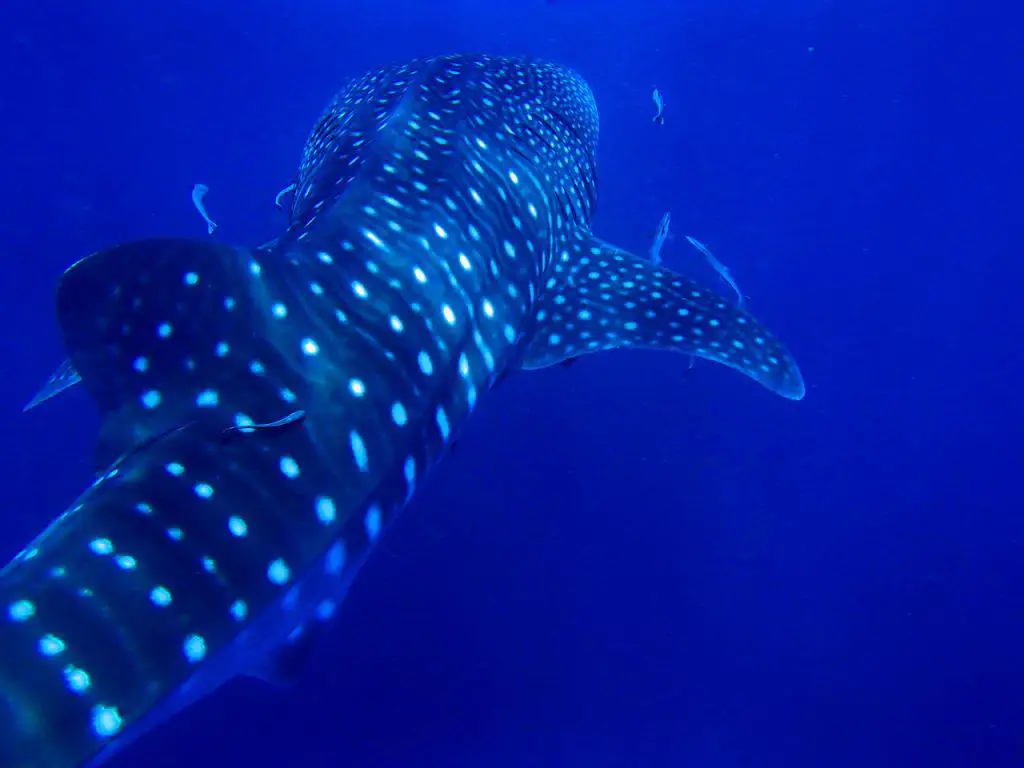
The whale shark, a magnificent marine creature, holds the title of being the largest fish in the world. With its enormous size and distinct spotted pattern, this gentle giant can reach lengths of up to 40 feet (12 meters) or more. To provide a visual comparison, the length of a whale shark is comparable to the size of a school bus.
Whale sharks inhabit warm and tropical waters across the globe, often found in areas with high concentrations of plankton and krill. They have a wide-ranging habitat preference, frequently spotted in coastal areas, coral reefs, and open ocean environments. Despite their massive size, whale sharks are filter feeders, sieving vast amounts of water to capture their microscopic prey. They possess rows of tiny teeth but pose no threat to humans as they primarily feed on plankton and small fish.
9. Chinese Salamander
The Chinese giant salamander is an impressive amphibian that ranks among the largest salamanders in the world. With a robust and elongated body, they can grow up to 5 feet (1.5 meters) in length, making them the largest amphibians on Earth. To visualize their size, an adult Chinese salamander can be as long as a tall human adult and heavier than a medium-sized dog.
These salamanders are native to the mountainous regions of China, where they prefer cool, clean, and well-oxygenated water bodies such as rivers, streams, and ponds. They have a semi-aquatic lifestyle, spending much of their time in water and venturing onto land for breeding and nesting. Chinese salamanders have a secretive nature and are most active during the night, utilizing their sensitive skin to detect prey such as fish, insects, and small vertebrates.
10. Giraffe

The giraffe, an iconic and graceful creature, is recognized as the tallest land animal on Earth. With their long necks and distinctive coat patterns, giraffes can reach heights of up to 18 feet (5.5 meters) or more. To put their height into perspective, an adult giraffe can tower over most buildings and stand as tall as a two-story house.
Giraffes are native to the savannas and grasslands of Africa, where they thrive in open habitats with scattered trees and abundant vegetation. They have a specialized physique, with long legs and a prehensile tongue that allows them to reach leaves and foliage high up in the trees. Their unique neck structure, consisting of seven vertebrae, enables them to browse on foliage that is out of reach for other herbivores.
11. Capybara

The capybara, a fascinating semi-aquatic mammal, holds the title for being the largest rodent in the world. With a stout and compact body, capybaras can grow to lengths of up to 4.5 feet (1.4 meters) and weigh around 100 pounds (45 kilograms). To provide a visual comparison, an adult capybara is roughly the size of a medium-sized dog, but with a unique appearance characterized by its long, slender face and webbed feet.
Capybaras are native to the wetlands and grassy regions of South America, where they thrive in habitats with ample water sources such as rivers, lakes, and marshes. They are highly adapted for their semi-aquatic lifestyle, possessing the ability to swim and dive effortlessly. Capybaras are social animals and live in groups, known as herds, consisting of several individuals.
12. Polar Bear
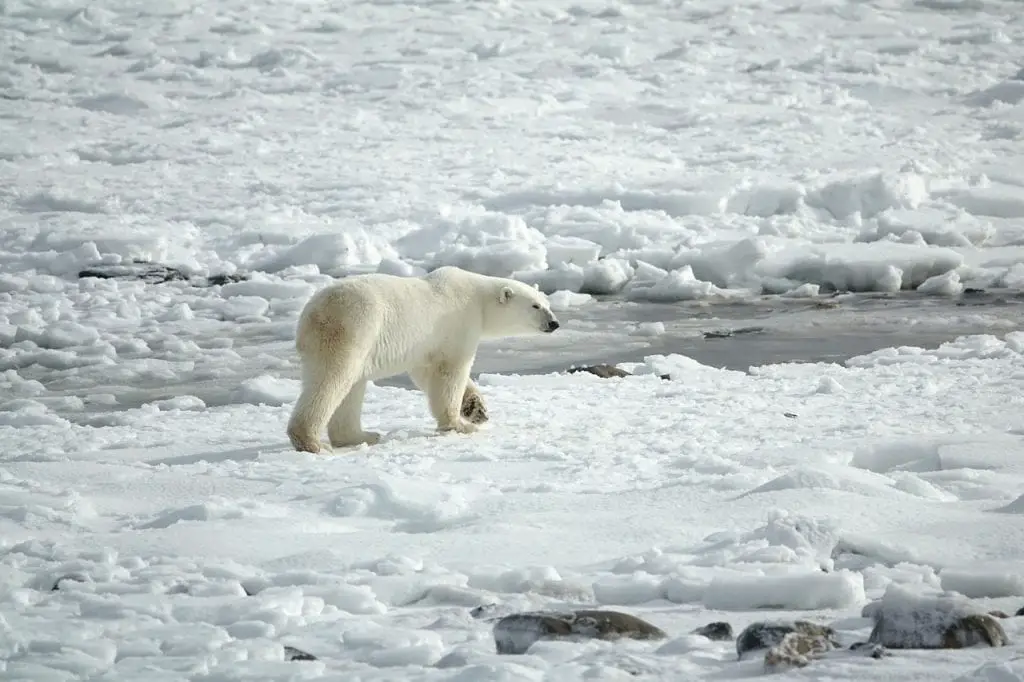
While there is some debate on who wins between a polar bear and a brown bear, I’ve given the tie to the polar bear as the largest land carnivore. As a majestic apex predator, is the *debatably* largest bear species in the world. With its distinctive white fur and formidable stature, polar bears can grow to lengths of up to 10 feet (3 meters) and weigh over 1,500 pounds (680 kilograms). To provide a visual comparison, an adult male polar bear can be as long as a small car and outweigh several adult humans combined.
Polar bears are highly adapted to their frigid Arctic habitat, preferring areas with sea ice for hunting seals, their primary prey. They have a thick layer of insulating blubber, a dense fur coat, and large paws equipped with sharp claws for traversing the icy terrain and swimming in the freezing waters. Polar bears are excellent swimmers and can cover long distances in search of food.
13. Giant Anaconda

The giant anaconda is renowned as one of the largest snake species in the world. With its muscular body and impressive length, giant anacondas can reach sizes of up to 25 feet (7.6 meters) or more. To provide a visual comparison, an adult giant anaconda can be as long as a small boat or about as long as two average-sized adult humans laid end to end.
These massive snakes inhabit the dense rainforests and swamps of South America, where they prefer aquatic environments such as rivers, lakes, and marshes. They are highly adapted for life in the water, with their streamlined bodies and powerful muscles enabling them to swim and hunt with remarkable agility. Giant anacondas are skilled ambush predators, relying on their incredible strength and stealth to capture and constrict their prey, which can include large mammals and even caimans.
14. Japanese Spider Crab

The Japanese spider crab, a fascinating marine creature, holds the title for having the longest leg span of any arthropod. With its elongated body and impressive limbs, the Japanese spider crab can reach a leg span of up to 13 feet (4 meters).
That’s right! The leg span of a fully grown Japanese spider crab is about the size of a small car.
These crabs are primarily found in the waters surrounding Japan, particularly in the Pacific Ocean. They inhabit deep-sea environments, preferring areas with rocky or sandy seabeds. Japanese spider crabs have long, thin legs that enable them to maneuver and scavenge for food on the ocean floor.
15. Komodo Dragon

The Komodo dragon, an iconic and formidable reptile, is the largest lizard species in the world. With its muscular build and impressive size, Komodo dragons can grow up to lengths of 10 feet (3 meters) or more. To provide a visual comparison, an adult Komodo dragon is about the same length as a compact car and can weigh over 150 pounds (70 kilograms).
These magnificent creatures are native to the Indonesian islands, particularly Komodo Island and its surrounding regions. They inhabit a range of habitats, including dry savannas, forests, and coastal areas. Komodo dragons have powerful legs and sharp claws, enabling them to move swiftly on land and even climb trees. They are skilled hunters, preying on a variety of animals such as deer, wild boars, and smaller reptiles.
Chart of the Biggest Animals in the World
Here’s a breakdown of some of the world’s scale-tipping animals.
| Animal | Size (up to) | Classification |
| Blue whales | 100 feet long (300 meters); 200 tons | Whale |
| African elephant | 13 feet tall (4 meters); 12,000 pounds (5,400 kg) | Land Mammal |
| Saltwater crocodile | 20+ feet long (6 meters) | Reptile |
| Leatherback sea turtle | 6 feet (2 meters); 1,000+ pounds (450 kg) | Sea Turtles |
| Ostrich | 9 feet tall (2.7 meters); 320 pounds (145 kg) | Birds (Flightless) |
| Giant Weta | 4 inches (10 cm); 2 ounces (60 grams) | Insect |
| Goliath birdeater spider | 12-inch (30 cm) leg span | Spider |
| Chinese giant salamander | 5 feet (1.5 meters) | Amphibian |
| Whale shark | 40 feet (12 meters) | Fish |
| Giraffe | 18 feet tall (5.5 meters) | Tallest Land Mammal |
| Capybara | 4.5 feet (1.4 meters); 100 pounds (45 kg) | Rodent |
| Polar bear | 10 feet (3 meters); 1,500+ pounds (680 kg) | Largest Land Carnivore |
| Giant anaconda | 25 feet (7.6 meters) | Snake |
| Japanese spider crab | 12 feet leg span (4 meters) | Arthropod |
| Komodo dragon | 10 feet (3 meters), 150+ pounds (70 kg) | Lizard |
Frequently Asked Questions: Biggest Animals in the World
You have questions about the biggest animals in the world. I have answers.
What is the biggest animal on Earth?
The blue whale holds the title of being the largest animal on Earth. It surpasses any other creature in terms of size and weight, with adult blue whales reaching lengths of up to 100 feet (30 meters) and weighing over 200 tons.
What is the largest bird?
The ostrich claims the title for being the largest bird in the world. Adult ostriches can stand up to 9 feet (2.7 meters) tall and weigh around 300 pounds (140 kilograms). They are flightless birds native to the savannas and grasslands of Africa.
Final Take on the Biggest Animals in the World
The biggest animals in the world boast of an impressive sizes. Beyond the sheer size of these animals, many of these massive animals have unique adaptations that help them stand out even more. For example, the giraffe’s long neck is certainly something to write home about.
Which is your favorite large animal?
